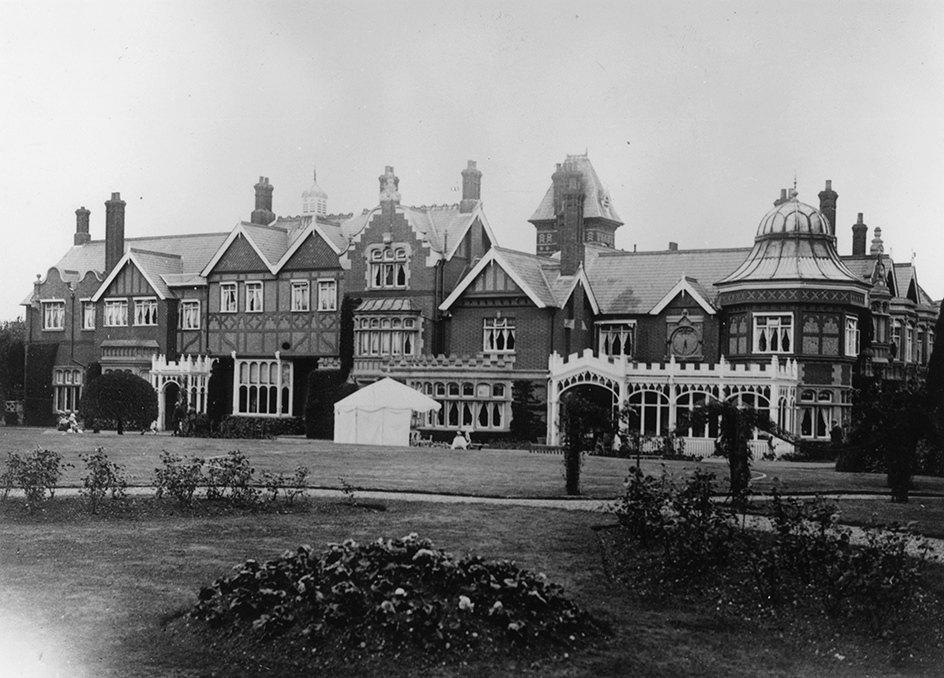Bletchley Park was an important center of British military intelligence during World War II (1939-1945). Initially a private estate, Bletchley Park housed the Government Code and Cypher School (GCCS). Thousands of civilians and members of the military were employed at the school to intercept and interpret enemy wartime communications. Their work was a vital contribution to the Allied war effort, particularly against the Germans in Europe and the Mediterranean region.

In the late 1800’s, the British businessman Herbert Leon established a country estate known as Bletchley Park in Buckinghamshire, England. After Leon and his wife died, the British government purchased the estate, about 50 miles (80 kilometers) northwest of London and connected to the city by major roads and rail lines. In 1939, the government relocated the GCCS from London to Bletchley Park. Established in 1919, the GCCS focused on breaking foreign codes and ciphers (a kind of secret writing).
The civilian staff at Bletchley Park, also called Station X, included numerous mathematicians, linguists, and other experts. Chess players also contributed to the effort. Together with military officers, the civilian staff deciphered, translated, and analyzed an enormous number of enemy communications, sometimes thousands per day. The English mathematicians Alan M. Turing and Max Newman invented two important codebreaking machines—the Bombe and the Colossus—at Bletchley Park. In 1941, United States Army and Navy intelligence specialists began working at the site. During the course of the war, the facility’s staff grew from several hundred to around 10,000.
After the war, some experts remained at Bletchley Park and continued to break codes for the GCCS, by then called the Government Communications Headquarters. The estate also served as home to various government training schools. It was finally taken out of service in 1987. Today, Bletchley Park is a public museum in the care of the Bletchley Park Trust.
